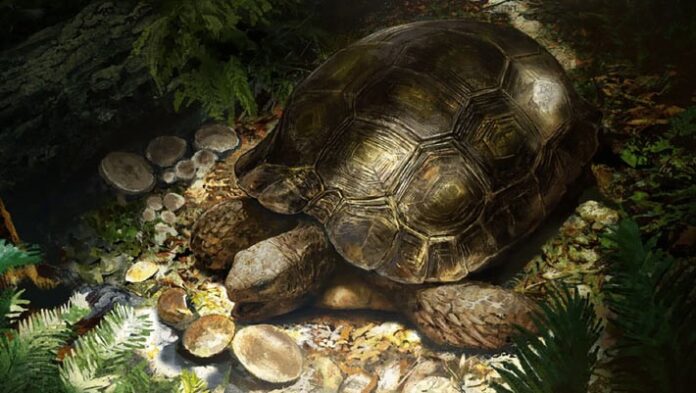A remarkable fossil discovery in the Czech Republic is rewriting the evolutionary history of Asian forest tortoises, suggesting their ancestors thrived in Europe millions of years ago. Paleontologists from the Polish Academy of Sciences and the Universitat Autònoma de Barcelona have identified a new species, Manouria morla, whose remains date back to the Early Miocene epoch, approximately 20 to 17 million years ago.
A Glimpse into the Past: Manouria morla
Manouria morla lived in the swampy environments of what is now the Czech Republic. The fossilized remains — comprising parts of the tortoise’s shell (carapace and plastron) and numerous shell fragments — were unearthed at the Ahníkov I fossil site in the Most Basin, Bohemia. The estimated length of Manouria morla’s shell was roughly 50 centimeters (20 inches), classifying it as a medium-sized tortoise, with species larger than 75 centimeters being considered giant-sized.
A Link to Modern Asian Tortoises
This new species is the oldest known member of the Manouria lineage, a group that today is exclusively found in Southeast Asia. The Manouria genus includes four extinct species and two living ones: the Asian forest tortoise (Manouria emys ) and the impressed tortoise (Manouria impressa ). Tortoises, broadly classified within the Testudinidae family, are specialized for terrestrial life, often adapted to semi-arid conditions.
The Environment Manouria morla Inhabited
The Ahníkov I site has long been recognized as a region of swamps and meandering rivers with shallow lakes. Researchers note the presence of juvenile crocodile fossils and, possibly, choristoderes, pointing towards a near-shore wetland habitat. Importantly, the discovery of Manouria morla suggests a more complex ecosystem nearby—a broadleaf evergreen wet forest with a distinct rainy and dry season, strikingly similar to the modern Kaeng Krachan National Park in Thailand.
Rewriting Paleobiogeographic Distribution
The discovery significantly expands the known geographical range of the Manouria genus, shifting its origin far west to the heart of Europe. >Previously, it was assumed that these tortoises were solely an Asian species. This finding indicates a surprising shift in understanding the historical distribution of these animals.
Implications for Tortoise Evolution
>The results suggest that the Manouria genus originated in Europe just before the Middle Miocene Climatic Optimum—a period of intense global warming—and subsequently spread to Asia. This remarkable find provides compelling evidence that the ancestors of the Asian forest tortoises once roamed the landscapes of Europe, and their dispersal to Asia occurred much later than previously thought. The findings were published in the Swiss Journal of Palaeontology on October 3, 2025, adding a new chapter to our understanding of tortoise evolution and paleobiogeography.
























